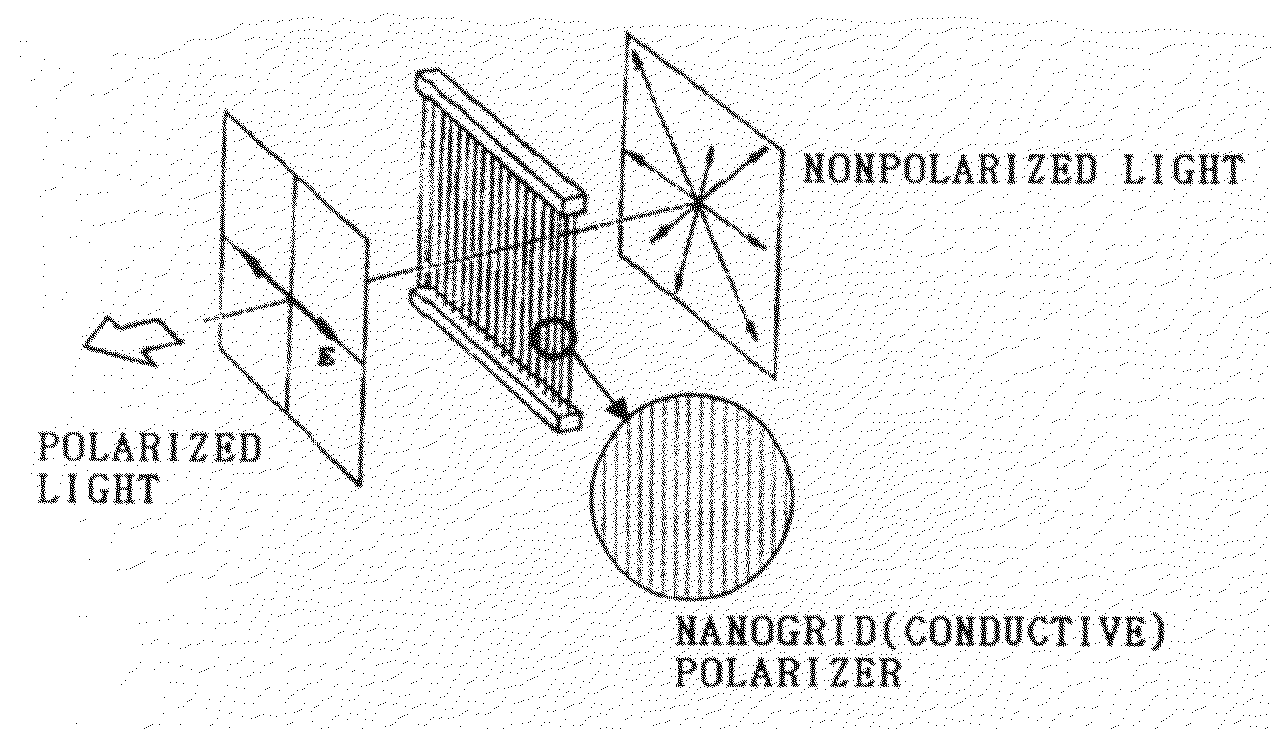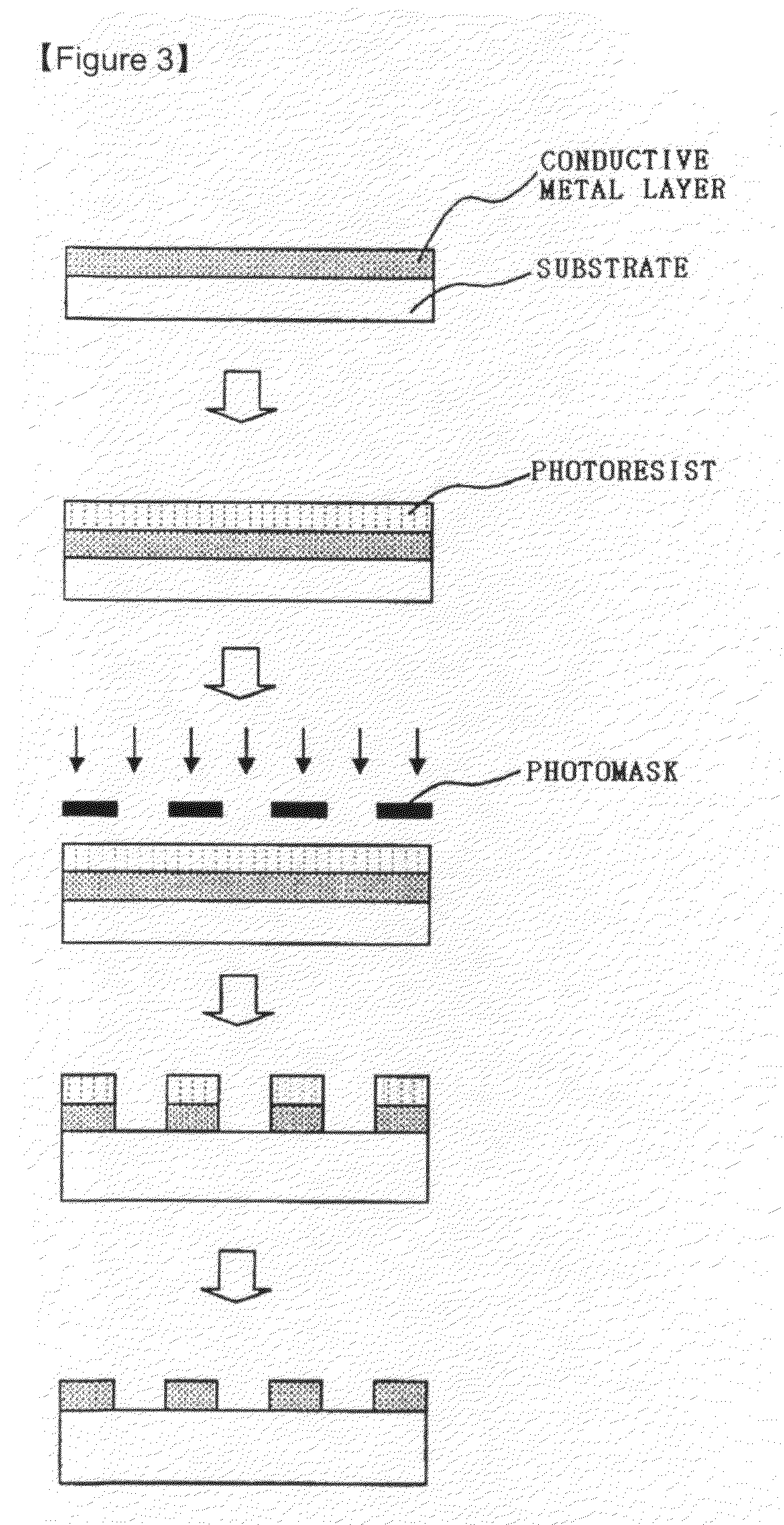Method of patterning conductive layers, method of manufacturing polarizers, and polarizers manufactured using the same
a technology of conductive layer and manufacturing method, which is applied in the direction of manufacturing tools, instruments, static indicating devices, etc., can solve the problems of high manufacturing cost, complicated process, and inability to apply a conventional nanogrid polarizer to a liquid crystal display
- Summary
- Abstract
- Description
- Claims
- Application Information
AI Technical Summary
Benefits of technology
Problems solved by technology
Method used
Image
Examples
example 1
[0039]A polarizer was manufactured according to the procedure shown in FIG. 5. Specifically, a nickel stamper was manufactured using a laser stereolithography process so that the pitch was 200 nanometers and the line width of nanogrid was 65 nanometers. An extruded transparent polyester film (SAEHAN Corp. in Korea) having the thickness of 100 μm as a resin layer was pressed with the nickel stamper and heated at 150° C. to form grooves and protrusions corresponding to a mold of the stamper (using a nano imprinting instrument of NND Corp. in Korea). Subsequently, a solution (made by Advanced Nano Products Corp. in Korea) where silver nano particles as the conductive filling material were dispersed and stabilized in ethanol selectively filled the grooves formed on the polyester film using a knife coating process (stainless comma knife), and is then dried for 30 minutes at 120° C. Subsequently, a protective film was formed using a transparent acryl-based resin to manufacture the nanogri...
example 2
[0040]A polarizer was manufactured according to the procedure shown in FIG. 6. Specifically, a transparent photocurable liquid molding urethane acrylate resin (SK-CYTECH Corp. in Korea) was applied on a transparent polyester film (A4400 of TOYOBO CO. LTD in Japan) having the thickness of 100 μm as a substrate to form a photocurable resin layer. Subsequently, after the photocurable resin layer was pressed with the nickel stamper as shown in example 1, ultraviolet rays were radiated on the resin layer for 20 seconds to cure the resin layer, and the stamper was separated to form grooves and protrusions on the photocurable resin layer. Subsequently, aluminum is sputtered at an inclined side angle of 80° and at the rate of 0.2 nm / seconds to be deposited at the thickness of 150 nm (ULVAC Inc. in Japan) so that aluminum is selectively filled only on the protrusions of the resin layer. Then, a protective film was formed to manufacture the nanogrid polarizer.
PUM
| Property | Measurement | Unit |
|---|---|---|
| width | aaaaa | aaaaa |
| width | aaaaa | aaaaa |
| thickness | aaaaa | aaaaa |
Abstract
Description
Claims
Application Information
 Login to View More
Login to View More - R&D
- Intellectual Property
- Life Sciences
- Materials
- Tech Scout
- Unparalleled Data Quality
- Higher Quality Content
- 60% Fewer Hallucinations
Browse by: Latest US Patents, China's latest patents, Technical Efficacy Thesaurus, Application Domain, Technology Topic, Popular Technical Reports.
© 2025 PatSnap. All rights reserved.Legal|Privacy policy|Modern Slavery Act Transparency Statement|Sitemap|About US| Contact US: help@patsnap.com



